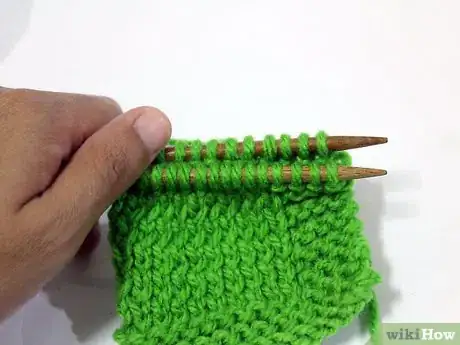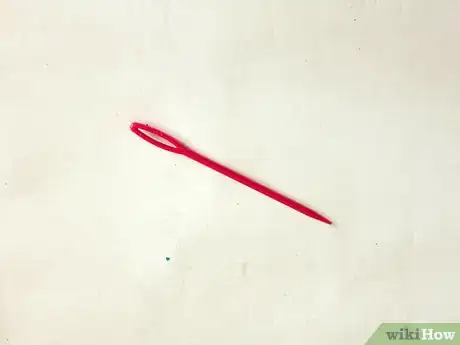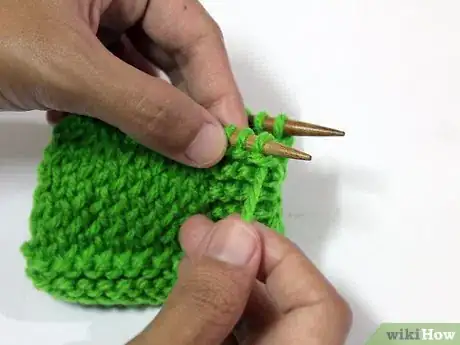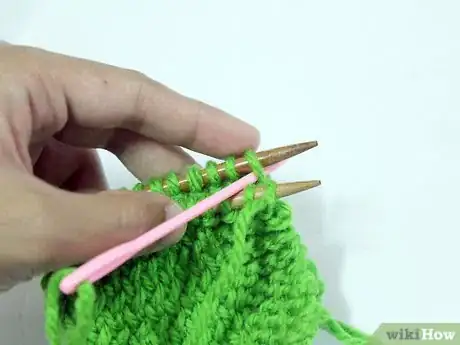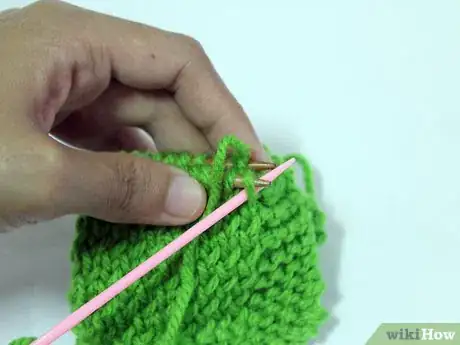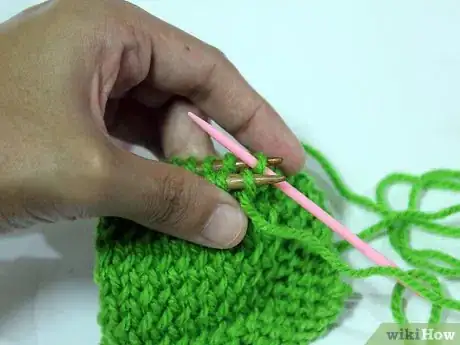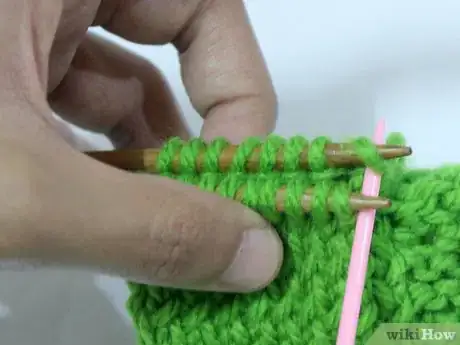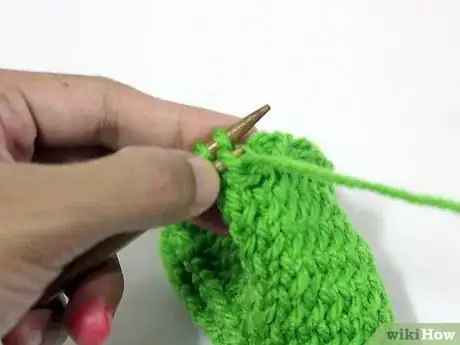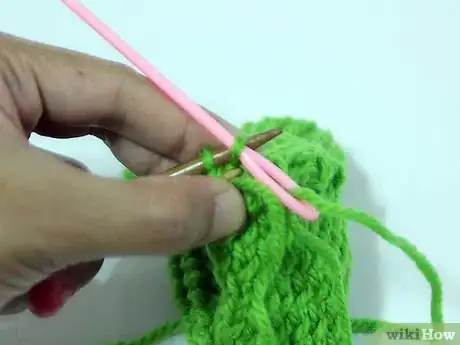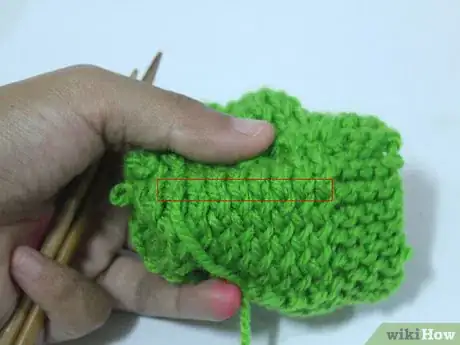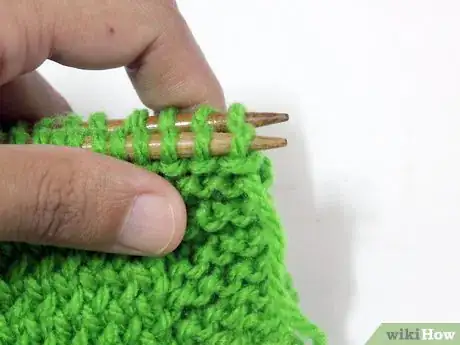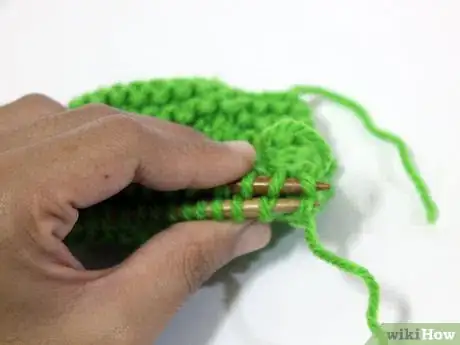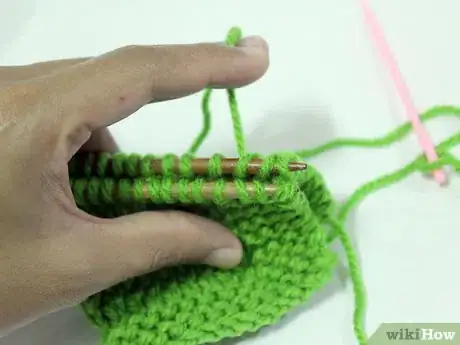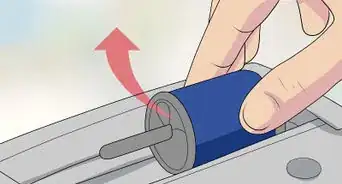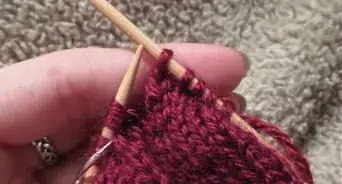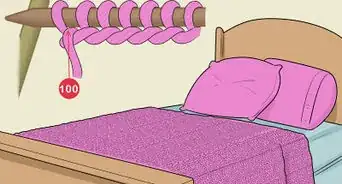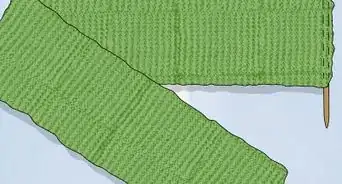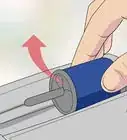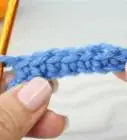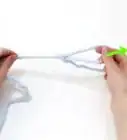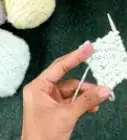wikiHow is a “wiki,” similar to Wikipedia, which means that many of our articles are co-written by multiple authors. To create this article, 14 people, some anonymous, worked to edit and improve it over time.
This article has been viewed 212,528 times.
Learn more...
Have you ever worn a sweater, or worse yet, a pair of socks with a seam that rubs and irritates? Using a simple knitting method called grafting or Kitchener Stitch, you can fix this problem and have seams that are invisible and comfortable. Simply put, by using a blunt tapestry needle and matching yarn, you can make stitches which imitate those of the knitted fabric. The Kitchener stitch can also be used to attach parallel rows of live stitches to one another.
Steps
Grafting Stockinette Stitch
-
1Begin with the stitches to be joined on two needles held parallel to one another with the stitches to be joined across from one another. There must be the same number of stitches on both needles. Do not cast off.
-
2Thread a length of matching yarn on a tapestry needle; you will be mimicking the path of a new row of stitches with it. You can join while the stitches are still on the needle by withdrawing the needles stitch by stitch as you work. (If you prefer, dampen the stitches slightly or run a thread through the stitches to prevent unraveling and remove both needles before starting to graft.)Advertisement
-
3Attach the yarn at the right hand edge of the upper piece.
-
4Graft the first two stitches like so:
- Insert the tapestry needle purl wise into the first stitch on the front needle and pull the yarn through, leaving the stitch on the needle.
- Insert the tapestry needle knit wise into the first stitch on the back needle and pull the yarn through, leaving the stitch on the needle.
-
5Graft all stitches before the last two stitches in this manner:
- Insert the tapestry needle knit wise into the first stitch on the front needle and pull the yarn through, dropping the stitch from the needle.
- Insert the tapestry needle purl wise into the next stitch on the front needle and pull the yarn through, leaving the stitch on the needle.
- Insert the tapestry needle purl wise into the first stitch on the back needle and pull the yarn through, dropping the stitch from the needle.
- Insert the tapestry needle knit wise into the next stitch on the back needle and pull the yarn through, leaving the stitch on the needle.
-
6Graft the last two stitches like so:
- Insert the tapestry needle knit wise into the first stitch on the front needle and pull the yarn through, dropping the stitch from the needle.
- Insert the tapestry needle purl wise into the first stitch on the back needle and pull the yarn through, dropping the stitch from the needle.
-
7Pull the yarn tight, cut it off to a short amount, and weave in yarn on the inside of the work. You should have a seamless edge that mimics the stockinette knitting. Voila!
Grafting Garter Stitch
-
1Place the two pieces so the knit V row is on the top and the purl bump row on the bottom.
-
2Attach the yarn at the right hand edge of the upper piece.
-
3Put the needle down through the first stitch on the lower piece and bring it up through the next stitch. Draw up the yarn.
-
4Bring the needle up through the first stitch on the upper piece and put it down through the next stitch.
-
5Repeat these steps until all the stitches are joined.
-
6Pull the yarn tight, cut it off to a short amount, and weave in yarn on the inside of the work.
Community Q&A
-
QuestionHow do I graft a garter edge on both sides and stockinette in the center?
 Community AnswerYou would graft into each stitch as it is, purlwise for garter and knit for stockinette.
Community AnswerYou would graft into each stitch as it is, purlwise for garter and knit for stockinette. -
QuestionCan I graft into an already knitted area? If so, how?
 Community AnswerIf you are doubling the thread, pick up the loop - either from a purl "bump" or from the knit section, and try it from there. I've never done this but seen the technique used to repair damaged but beloved garments.
Community AnswerIf you are doubling the thread, pick up the loop - either from a purl "bump" or from the knit section, and try it from there. I've never done this but seen the technique used to repair damaged but beloved garments. -
QuestionCan I graft a cast on edge to live stitches? I am making a beanie that needs to be made into a tube this way.
 T. ChinsenTop AnswererIt is possible to bring the cast on edge to the row being knit and simply knit the cast on and the live stitch together. This will eliminate having to graft it on later. If you are past this point, then graft your live stitches to the row above the cast on row. These stitches are better defined and easier to see than the cast on row and will result in a neater finish.
T. ChinsenTop AnswererIt is possible to bring the cast on edge to the row being knit and simply knit the cast on and the live stitch together. This will eliminate having to graft it on later. If you are past this point, then graft your live stitches to the row above the cast on row. These stitches are better defined and easier to see than the cast on row and will result in a neater finish.
Things You'll Need
- Blunt tapestry needle
- two knitted pieces to be joined
- matching yarn
About This Article
Grafting, also known as Kitchener stitching, is a great way to create comfortable seams that don’t rub against your skin. To graft a garter stitch, position your 2 pieces of material so the knit V-row is on the top and the purl bump row is on the bottom. Attach the yarn at the right-hand edge of the upper piece. Then, put the needle down through the first stitch on the lower piece, bring it up through the next stitch, and draw up the yarn. Bring the needle up through the first stitch on the upper piece and put it down through the next stitch. Repeat the steps until all the stitches are joined. Finally, pull the yarn tight, cut it off to a short amount, and weave in yarn on the inside of the work. For more tips, including how to graft a stockinette stitch, read on!
